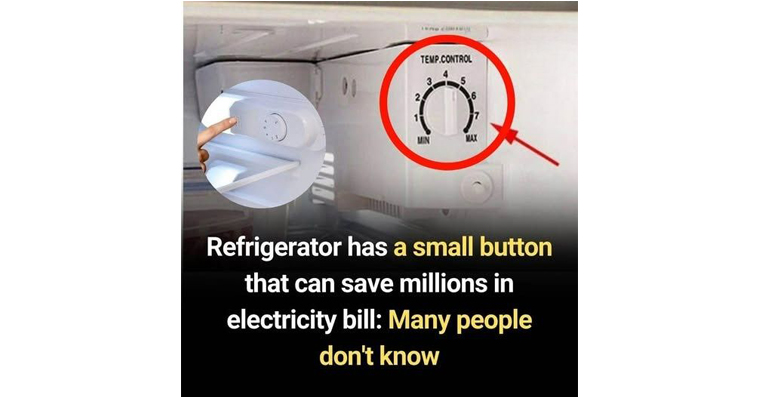Refrigerators are one of the largest energy-consuming appliances in most households, and even small adjustments can lead to significant electricity savings. One often overlooked feature is the temperature control dial or button inside your refrigerator. By adjusting this setting, you can optimize your fridge’s performance and reduce energy consumption.
Here’s how you can save electricity by adjusting the temperature control on your refrigerator:

1. Understand the Temperature Control
Most refrigerators have a temperature control dial, knob, or digital button that allows you to adjust the internal temperature. This control regulates how cold your fridge and freezer compartments get. It’s important to set it correctly for both food safety and energy efficiency.
- Ideal Refrigerator Temperature: 37°F to 40°F (3°C to 4°C)
This range keeps food fresh without overcooling. - Ideal Freezer Temperature: 0°F (-18°C)
This ensures proper freezing while avoiding excessive energy use.
If your refrigerator is set too cold, it wastes electricity. If it’s too warm, it could spoil your food.
2. Locate and Adjust the Temperature Control
- Step 1: Find the Control
The temperature control is usually located inside the fridge compartment, often near the top or back wall. Some modern models have digital controls on the front panel. - Step 2: Check the Current Setting
Look at the current setting on the dial or display. Numbers typically range from 1 to 5 (or higher), with higher numbers meaning colder temperatures. - Step 3: Adjust Gradually
- For most fridges, a setting around 3 or 4 is ideal. Start here and monitor the temperature using a thermometer placed in a glass of water inside the fridge.
- If the temperature is too warm or too cold, adjust the dial slightly and recheck after 24 hours.
3. Benefits of Proper Temperature Adjustment
- Energy Savings: A refrigerator running at unnecessarily low temperatures uses more electricity. Raising the temperature by just a few degrees can reduce energy consumption by up to 10% .
- Extended Appliance Life: Running your fridge at optimal settings reduces wear and tear on the compressor, prolonging its lifespan.
- Food Safety: Keeping your fridge and freezer at the right temperatures ensures food stays fresh and safe to eat.
4. Additional Tips to Save Electricity
While adjusting the temperature control is a great start, here are other ways to maximize energy efficiency:
a. Keep the Door Closed
- Minimize the time the refrigerator door is open. Each time you open the door, warm air enters, forcing the fridge to work harder to cool down again.
b. Organize Your Fridge
- Keep items organized so you can find what you need quickly. Place frequently used items at eye level to avoid unnecessary searching.
c. Clean the Condenser Coils
- Dust and debris on the condenser coils (usually located at the back or bottom of the fridge) make the appliance work harder. Clean them every 6 months using a vacuum or brush.
d. Allow Space Around the Fridge
- Ensure there’s at least 2-3 inches of space between the refrigerator and the wall to allow proper airflow, which improves cooling efficiency.
e. Avoid Overloading
- Overfilling the fridge restricts airflow and forces the compressor to run longer. Leave some space for air circulation.
f. Use the Power-Saver Mode
- Many modern fridges have an energy-saving mode that turns off the anti-sweat heaters (used to prevent condensation). Enable this feature if you live in a dry climate.
g. Regularly Check the Door Seals
- Worn-out or dirty door seals let cold air escape. Test the seal by closing the door on a piece of paper—if it slips out easily, the seal needs cleaning or replacement.
5. Monitor Energy Usage
After adjusting the temperature and implementing these tips, monitor your electricity bill to see the impact. Many utility companies offer energy monitoring tools or apps that can help track your fridge’s usage.
Final Thoughts
Adjusting the small temperature control button on your refrigerator is a simple yet effective way to save electricity. By setting the temperature to the recommended range and following additional energy-saving practices, you can reduce your energy consumption, lower your utility bills, and contribute to a greener environment.


